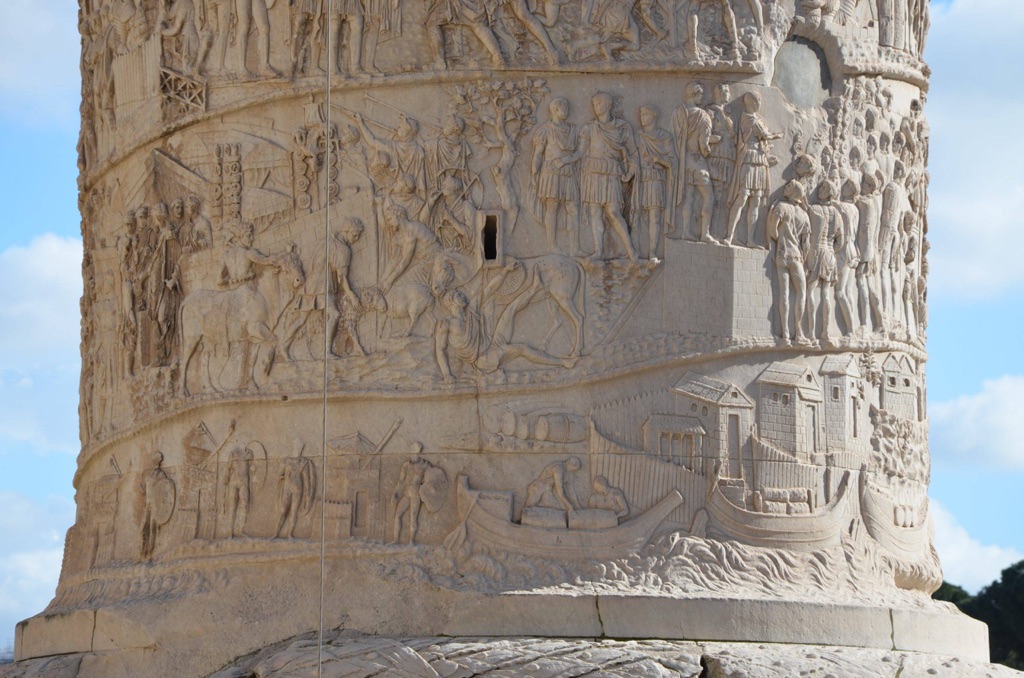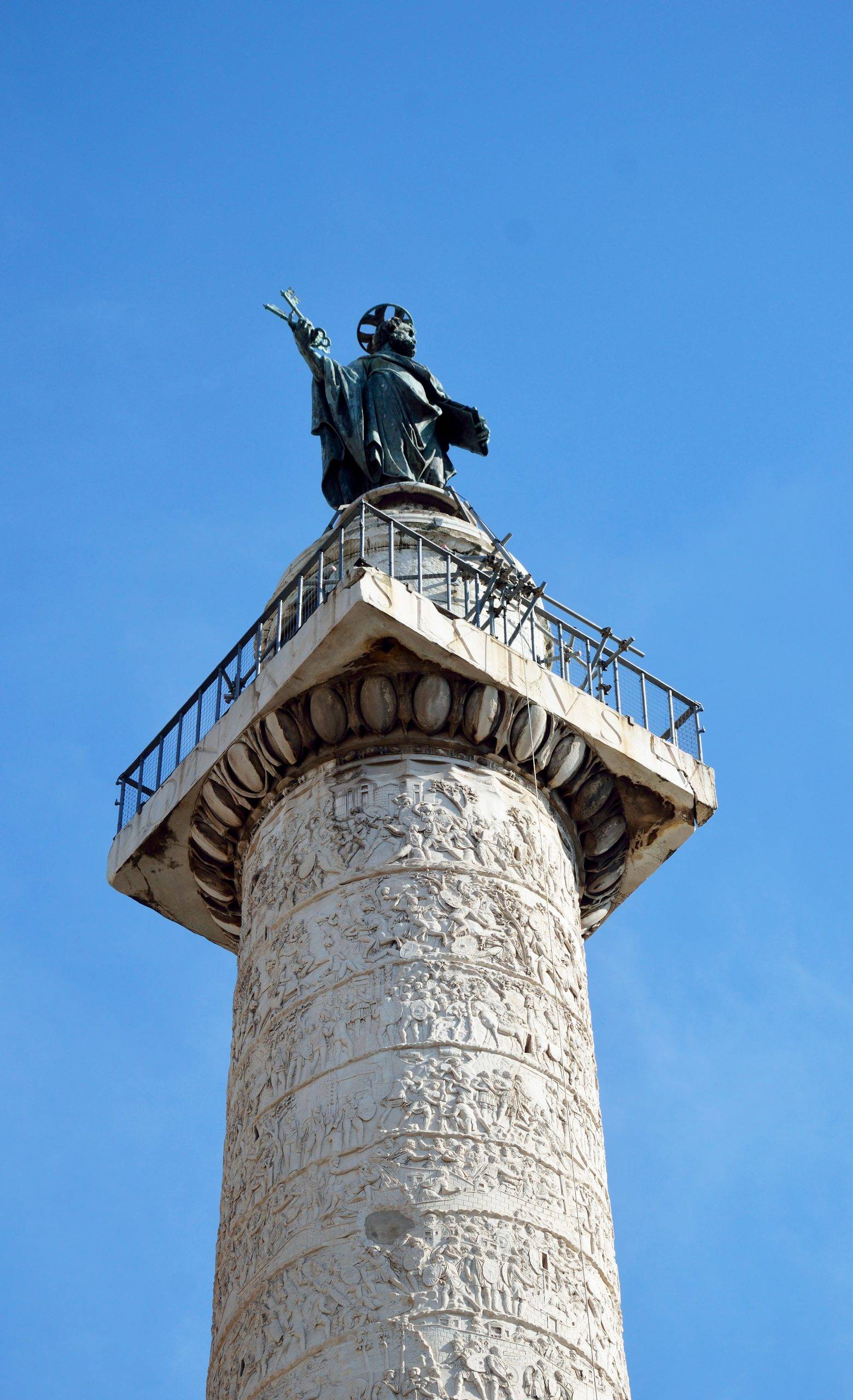Located in the heart of Rome, Italy, stands a monumental pillar known as Trajan’s Column. This towering structure, reaching a height of approximately 35 meters (115 feet), is a marvel of Roman architecture and a testament to the grandeur of the Roman Empire. The column, adorned with intricate carvings, tells the story of Emperor Trajan’s victorious Dacian Wars. It’s a captivating piece of history that draws in scholars, historians, and tourists alike.
Get your dose of History via Email
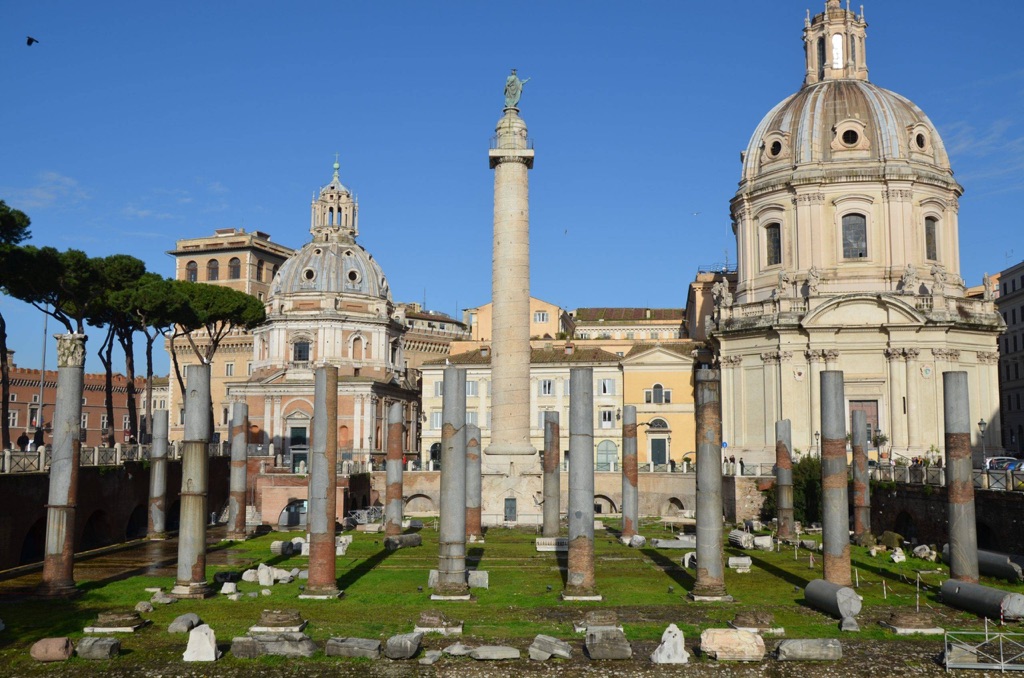
Historical Background
Trajan’s Column was erected in 113 AD during the reign of Emperor Trajan. It was built under the supervision of the architect Apollodorus of Damascus, who was also responsible for other significant structures in Trajan’s Forum. The column was a commemorative monument, celebrating the Emperor’s victory in the Dacian Wars, which took place from 101-102 and 105-106 AD. The Dacians, who lived in what is now modern-day Romania, were a significant threat to the Roman Empire, and their defeat marked a major triumph for Trajan.
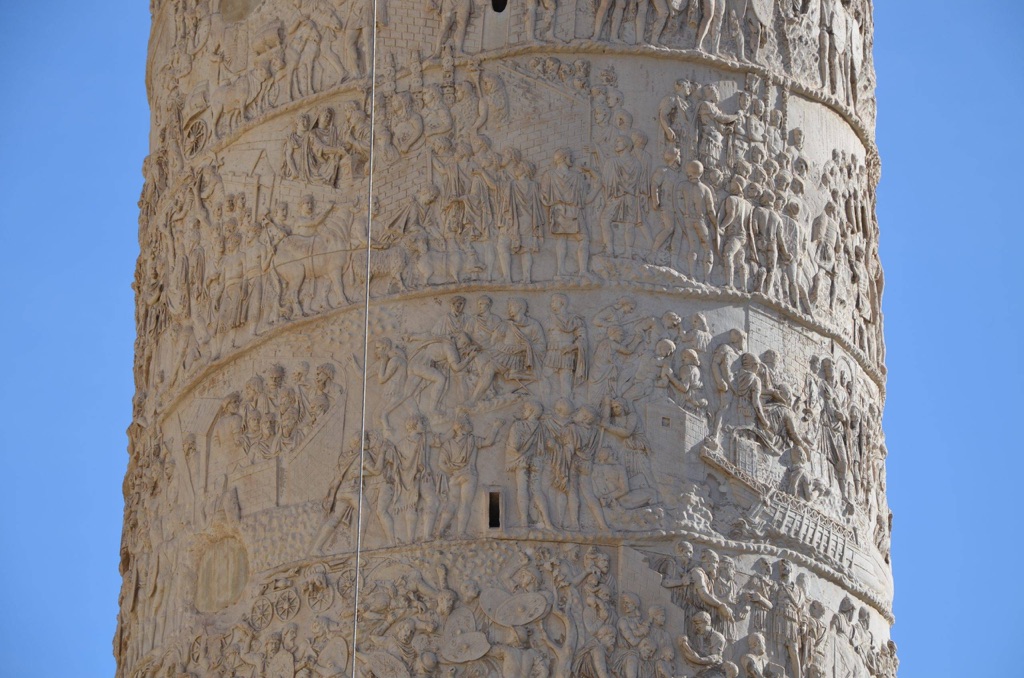
Architectural Highlights
The column is made of Carrara marble, a type of white or blue-grey marble popular for use in sculpture and building decor. It is most likely that the marble was quarried at the northernmost tip of Tuscany and then transported to Rome for construction. The column consists of 29 blocks of marble, each weighing about 32 tons. The structure itself is hollow, with a spiral staircase of 185 steps leading to a viewing platform at the top.
The most striking feature of Trajan’s Column is the continuous spiral frieze that wraps around the column from base to capital. This intricate relief sculpture, stretching for about 200 meters if it were unwound, depicts scenes from the Dacian Wars. Over 2,500 figures are carved into the marble, illustrating various scenes of battle, sacrifice, and Roman military life.
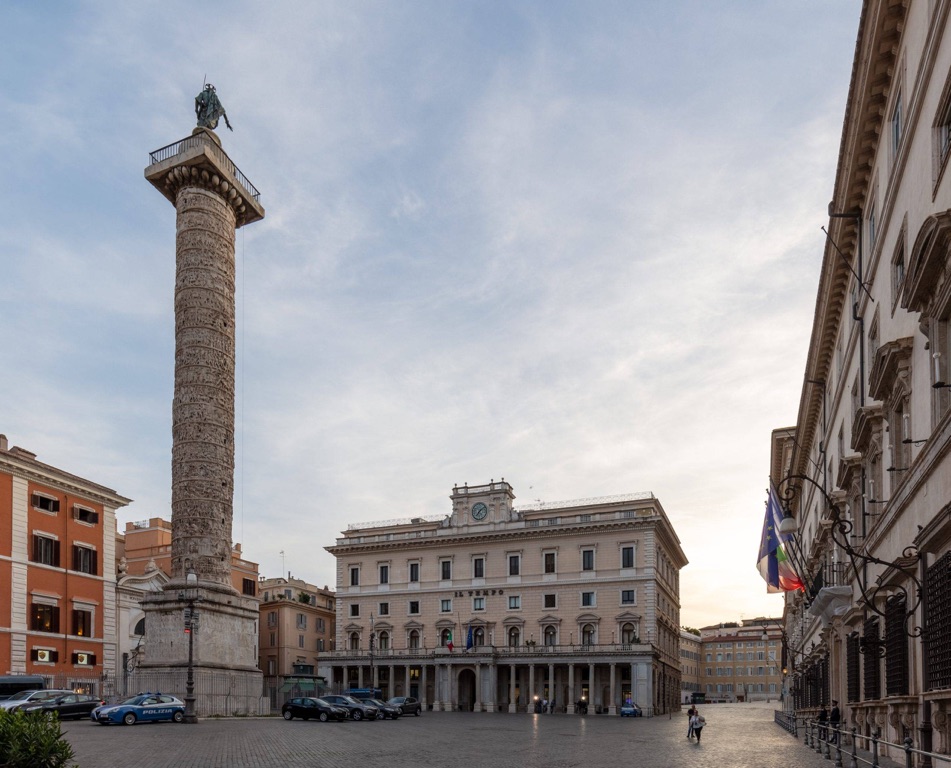
Theories and Interpretations
While the primary purpose of Trajan’s Column was to commemorate Emperor Trajan’s victories, it also served other functions. Some scholars believe that it was used as a sundial, while others suggest that it may have served as a symbolic representation of Trajan’s ascension to the gods upon his death.
The column’s frieze provides a wealth of information about the Roman military and its tactics. However, the interpretation of these scenes has been a subject of debate among historians. Some argue that the frieze should be read from bottom to top, following the spiral upwards, while others believe it should be read in tiers or levels.
The dating of the column is based on historical records and the style of the sculpture. The column’s completion is recorded in the ancient book “Epitome de Caesaribus”, which states that it was finished in 113 AD. The style of the sculpture, with its realistic depiction of figures and attention to detail, is characteristic of the high Roman style of the 2nd century AD.
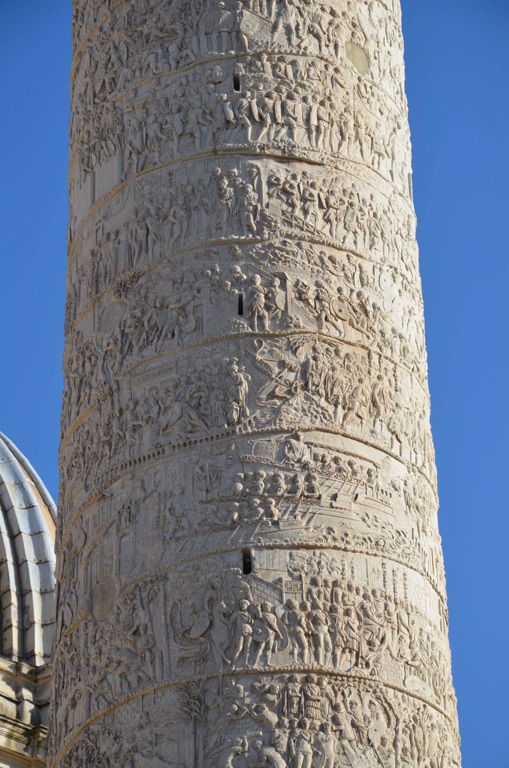
Good to know/Additional Information
Inside the base of Trajan’s Column, a chamber was discovered that is believed to have once contained the golden urns holding the ashes of Emperor Trajan and his wife, Plotina. However, these were lost at some point in history.
Today, a statue of St. Peter stands atop the column, replacing the original statue of Trajan, which was likely removed in the Middle Ages. Despite these changes and the ravages of time, Trajan’s Column remains one of the most well-preserved monuments from ancient Rome, providing a fascinating glimpse into the past.
